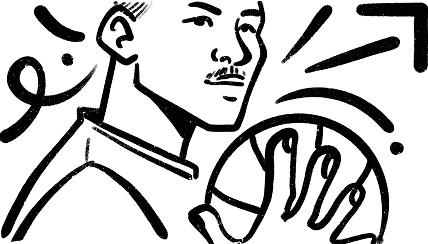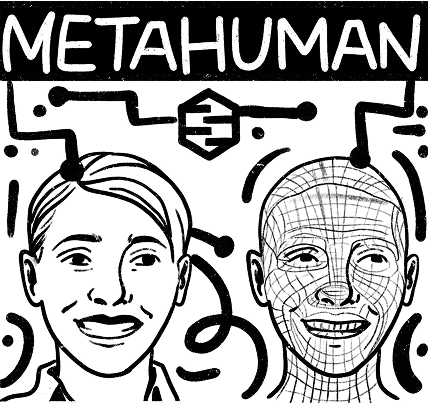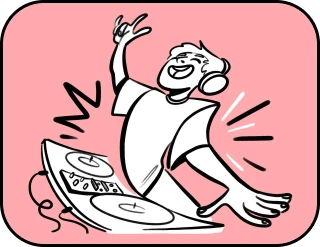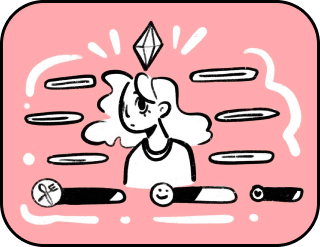Category: Materialization technologies
Sports after death: digital clones and virtual legends
“True fame is when your name is shouted by the crowds thirty years after your last match”
Pelé
Michael Jordan is stepping back onto the court again—his jump remains flawless, and his gaze burns through the screen, even though the former NBA star is well over 60. Shaquille O’Neal’s voice echoes through the locker room during a timeout, and it’s not a recording but a neural network that knows what players want better than any coach. Somewhere in an alternate reality, Pelé scored his third goal against Mbappé so swiftly that no one would even remember that the Brazilian football legend has long since left us.
For the deceased stars, sports are no longer just emotionless images from another Electronic Arts game on your PlayStation—now it’s a living dialogue with legends who teach, play, and even troll you. You train alongside Kobe Bryant while disgruntled teammates shout in rage: “He’s not real!” But what does it matter if he’s still Black Mamba?
Digital clones are not reincarnations but an eternal “god mode”: you can erase injuries, add speed, and choose the conditions you want. Once, stadiums emptied after heroes retired—now you can bring them back with a click, like an old song in your playlist. A hologram coach Ronaldo adjusts your sock before a shot, and his signature curl still hits the mark. Fans argue on social media: “Deepfake! Maradona isn’t real!” while his digital copy scores a goal that no one dreamed of before these technologies existed. We no longer say goodbye to past idols—we bring them back anew, and it’s either pathetic or the ultimate life achievement.
The Return of Jordan
“Michael Jordan is back on the court!” sounds like the start of an unremarkable fanfiction, but it seems to be our new reality. Schools year after year tell the same stories about James Naismith, his classmates, and a fruit basket—as if nothing more interesting has happened in basketball over the past 130 years. But now, the great sports story is being rewritten.

In NBA 2K, there appears a digital Jordan—a fully realized, almost lifelike avatar that moves, speaks, and plays exactly as he did in 1998. His signature style, famous body language—even his spitting on the court—is recreated with astonishing digital precision.
We stand on the brink of a new era where sports legends gain digital immortality. This isn’t just dull graphics for video games anymore—soon virtual copies of athletes will train rookies, commentate matches, and even step onto the field against real players.
Imagine: 2030. The NBA Finals. On one side, there’s current league stars. On the other—a team assembled from archived footage of legends past. Jordan versus Doncic; Shaq versus Embiid; Bryant versus Tatum. Who will win this spectacular yet absurd showdown?
Behind this technological fantasy lie uncomfortable questions: who will own the rights to these digital copies? How do we prevent avatars from being used for propaganda? And most importantly: are we turning sports into an endless remake of the past where new stars are always compared to ghosts of the golden era?
One thing is clear: the sport of the future will be strange, controversial—and unlike anything we see today. And we’re taking our first steps into this new era right now—every time we turn on a game and see a “resurrected” Jordan making his famous final shot again.
Dead Stars Get New Careers
Meanwhile, in UCLA’s training hall an unusual silence reigns. Young basketball players listen intently to a voice that hasn’t been heard here for over ten years. It’s generated by a modern neural network recreating John Wooden’s coaching style with uncanny realism.
The legendary coach left behind a whole philosophy of play and quite extraordinary manuals. His “Pyramid of Success,” created in the mid-20th century, remains surprisingly relevant today—about 82% of Wooden’s tactical decisions are still optimal by modern basketball standards.
This LLM system can adapt Wooden’s principles to contemporary gameplay better than dry reference guides. For example, analyzing training videos allows it to identify players with leadership potential—demonstrating an understanding of human psychology.
Such projects may spark serious debate. Many Wooden followers insist that his legacy shouldn’t become a tool for commercial gain. But it’s reasonable to believe that methodologies developed at UCLA are part of his intellectual property.
Experts see more than just a technological experiment here, “We’re building bridges between generations,” explains Dr. Amy Chen from Stanford. “The wisdom of great coaches gets a second life in the digital age.”
Next in line for digital revival are probably Vince Lombardi and Dean Smith. It seems that in sports there begins a new era where legends of the past become mentors for the future.
Deepfake Matches: “Pelé vs Haaland: Who Will Win?”
Imagine: Pelé dribbles with the ball on screen, evades defenders, and shoots—just like half a century ago. Next to him young Haaland runs across the field; he was not even born during Pelé’s prime but now plays alongside him in this virtual match. They pass each other the ball and score goals together—it’s not a dream or science fiction but how football might look in the near future.
Football clubs and federations increasingly consider digital immortality for legends. Technologies like motion capture and AI already allow us to “resurrect” past players by creating precise digital copies. EA Sports labs scan faces of current stars; film studios restore old footage up to 4K quality.
But what will we get? An emotional meeting across generations or an awkward hybrid of sport and video game?
On one hand, such projects are excellent ways to introduce young fans to legends—and instead of distant archive footage they get live interaction with icons: watch Maradona dribble past defenders or try stopping him virtually (no fouls allowed!).
On the other hand—won’t noble ideas turn into mere mirrorings? Style is character, emotions, unpredictability, tension, and vast experience—all that makes each game unique—and these cannot be replaced by soulless images or cold code alone. Can we recreate ‘the soul’ of play using only videos and stats?
Ethical issues also loom large: who will have rights to “resurrect” departed players? How will relatives react to their digital doubles? Will we lose some magic—the very essence of live games—that draws us to stadiums?
Many questions remain unanswered—for now only one thing is clear: sport stands at the threshold of a new age where past and present can meet both on virtual fields and real ones alike—and it remains to be seen whether we’re ready for this encounter.
The Future Is Not Far Off
Digital technologies for recreating personalities undoubtedly open new horizons for preserving sporting heritage. Modern developments enable creating accurate digital copies of athletes for virtual competitions and training sessions.
The gaming industry already demonstrates significant achievements here: Epic Games’ MetaHuman creates photorealistic 3D models with precise animation; similar solutions are used sparingly in sports—for VR exhibits or data analysis systems.

The market of digital humans is valued at $3.8 billion with projections reaching $15 billion by 2027; VR tech in sports accounts for $1.2 billion today—with potential growth up to $8 billion by 2030. These impressive figures raise questions about societal impact.
Ethical debates are intense: about 47% of respondents support creating digital doubles of athletes; 38% oppose it—main concerns involve copyright issues and commercial use since not all families would welcome their loved ones’ digital resurrection.
Legal frameworks are still developing; some US states and EU countries consider relevant legislation; tech companies develop protection systems for protecting digital clones and verifying their authenticity. Environmental concerns are currently on the sidelines, but the fact remains: after artificially created matches, there will be less trash from beer bottles and chips in the stands.
They no longer leave
In twenty years, sports legends will become part of esports. Their skills and playing styles will be preserved in digital form, allowing new generations to compete against them. The line between real matches and virtual games will blur, and the fame of great players will attain eternal life.
They no longer go away. They simply reboot themselves.
The micro world makes particles dance to the melody of probability.
Thank you!




